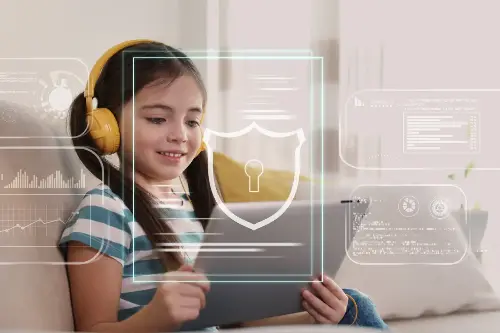The age of digital technology has brought the world to our fingertips, but it has also ushered in a host of new challenges for parents. As children become increasingly active on social media channels, it's crucial for parents to put the safety of their youngsters at the forefront. Navigating the digital landscape requires a fine balance between granting freedom and maintaining control, and in this digest, we will share practical advice on keeping your kids safe online.

Establishing Digital Ground Rules
Communication is the cornerstone of any relationship, and this holds true when discussing the digital world with your children. Begin with setting clear ground rules about the use of devices and what constitutes appropriate online behaviour. Encourage open discussions about what they are viewing, sharing, and who they are interacting with on social platforms. This can serve as the foundation upon which digital literacy and good online habits are built.
Teaching them the importance of not sharing personal information, understanding privacy settings, and recognising signs of cyberbullying can be a prelude to a safer online experience. Establish agreed-upon times for device usage to help manage their online activity without being intrusive.
Understanding Social Media Platforms
With a plethora of social media channels available, it's vital to stay informed about the ones your children use. Each platform has its own set of risks and safety features. Take the time to understand how platforms like Instagram, Snapchat, TikTok, and others work. Familiarise yourself with the privacy settings, reporting mechanisms, and content controls these applications offer. This knowledge isn't just for imposing restrictions but also for guiding youngsters in utilising these features to safeguard their own digital footprint.
Leveraging Parental Controls and Privacy Settings
Most social media platforms offer robust privacy settings that can help protect your child's online presence. Utilise these settings to manage who can view their profiles, comment on their posts, and even limit their exposure to advertising. For younger children, parental control apps can be beneficial. These apps can monitor social media usage, restrict access to certain content, and even set time limits on app usage.
It is, however, important to be transparent with your child about the use of such monitoring tools. The aim is not to breach their privacy but rather to ensure their online environment is just as safe as their physical one.
Educating about Online Interactions
Social media is all about interaction, and it's critical that children understand the nature of relationships and communication in a virtual setting. Teach them about the implications of over-sharing and the permanence of their online actions. Instil in them a sense of responsibility for both their own and others' feelings when communicating online.
Imparting the wisdom to treat online interactions with as much courtesy and respect as one would face-to-face can minimise the risk of misunderstandings and potential conflicts. Encourage them to share experiences of negative interactions so you can navigate through them together.

Staying Informed and Involved
As parents, staying informed about the latest online trends and potential risks is just as important as educating your children. Regularly update your own understanding of social media and the evolving digital landscape. Also, engaging in your child’s online activities can create a sense of shared experience that is less about policing and more about participating in their digital world.
By showing interest in their creative pursuits, gaming achievements, or simply the content they enjoy, you can foster a supportive environment that encourages them to keep their online activities transparent.
Responding to Cyber Threats and Bullying
Equipping your child with the knowledge of what cyber threats and bullying look like is a key aspect of online safety. Ensure they understand the importance of coming to you if they experience or witness any form of online harassment. Making sure they know how to report and block offending users and content can empower them to take control should they encounter any negative experiences.
Remember to address any such issues with sensitivity and a problem-solving approach. The objective is to reassure your child that they are not in trouble and that you are there to help them navigate through difficult situations.
Encouraging Healthy Online Habits
Finally, fostering healthy online habits is as necessary as any other aspect of a child's upbringing. Balance is vital; encourage offline activities and interests alongside their online ones. Discuss the value of time management and the impact of screen time on their health. By promoting a holistic approach to life that values both virtual and real-world experiences, children will naturally develop a healthier, more balanced relationship with social media and the digital world at large.
In conclusion, while the vast digital landscape can seem daunting, the steps to secure your child's safety on social media channels are clear and practicable. With a combination of open communication, education, and parental involvement, you can provide a safe environment that allows your children to enjoy the benefits of the online world without falling prey to its perils.
